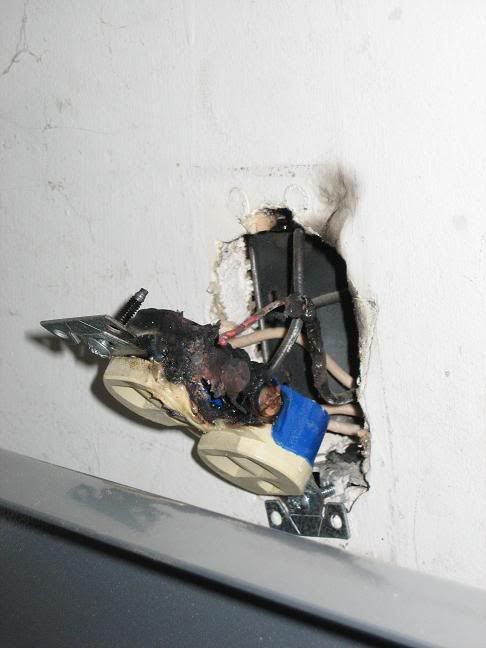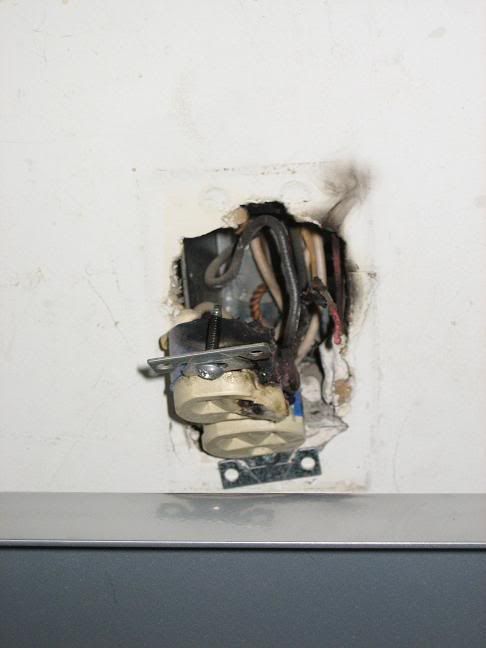bikeindy
Senior Member
- Location
- Indianapolis IN
quogueelectric said:I have never seen a receptacle looped in 12 and melted unless someone forgot to tighten a screw which was obviosly backed out.
Let me help you see, I have some photos here...


That is #12 and the screws were tight, the breaker had not tripped and this was tied to lighting in the kitchen back hall and bathroom, this receptacle was in the garage with a whole lot of outdoor Christmas lights on it. Now thats a great design for electrical garage receptacle on the same 20 amp circuit as the lights just inside the door.
Moderators note: Edited to fix img link
Last edited:


